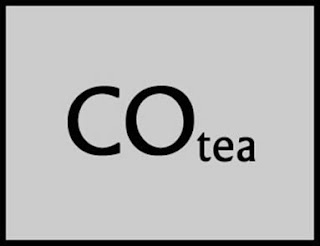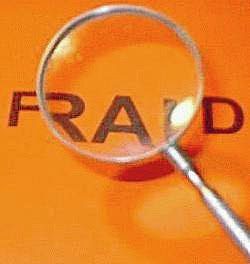TTABlog Quarterly Index: July - September 2009
Thank you, readers, for all your comments! For newbies, please note that you may follow The TTABlog on Twitter (here). E-mail subscriptions to the TTABlog are available: just enter your e-mail address in the box on the right to receive a daily update via Feedblitz. Please report any broken or inoperative links, as well as any errors and omissions, to the TTABlogger.

Section 2(a) - suggesting a false association:
Section 2(b) - US Flag, Coat of Arms, or Insignia:
Section 2(d) - likelihood of confusion:
- WYHA? TTAB Finds "LUCA'S CHOPHOUSE" Confusingly Similar to "LUCA PIZZA"
- Finding "COTT" and "COtea" For Soft Drinks Too Different, TTAB Dismisses 2(d) Opposition
- Finds Autos and Tires Not Closely Related, TTAB Reverses 2(d) Refusal of "ECHELON"
- Finding Wine and Beer Related, TTAB Affirms 2(d) Refusal of "BEAR REPUBLIC" over "BEAR REPUBLIC RICARDO'S RED ROCKET ALE & Design"
- Precedential No. 36: "MTOWN CLOTHING" and "MOTOWN" Confusingly Similar for Clothing, Croons TTAB
- "NO FRIGGIN CLUE" Confusingly Similar to "CLUE" for Video Games, Says TTAB
- Finding Clothing and Jewelry Related, TTAB Affirms 2(d) Refusal of "TIANA"
- WYHA? TTAB Finds "WOW PRINTABLE COUPONS" Confusingly Similar to "WOW! MARKETING"
- Re-Test Your TTAB Judge-Ability: Can You Handle Another Nut Case?
- TTAB Reverses "ANDIAMO" 2(d) Refusal: Insufficient Proof that Wine and Restaurant Services are Related
- Precedential No. 34: Applicant's Cancelled Registration for Identical Mark No Help, TTAB Affirms 2(d) Refusal of "DAVEY" for Water Pumps
- Test Your TTAB Judge-Ability with this Section 2(d) Nut Case
- Precedential No. 33: TTAB Designates Section 2(d) Alligator Decision as Precedential
- Precedential No. 31: In an Accelerated Decision, TTAB Sustains Schick Opposition to "SLICK ULTRA PLUS" for Disposable Razors
- Test Your TTAB "Eyeball"-Ability on Two Eagle Design Marks for Clothing
- Prepositional Difference in Marks Not Enough to Avoid 2(d) Refusal, Says TTAB
- Test Your TTAB Judge-Ability
- TTAB Says No and No to "NAP OF THE CARIBBEAN" Double Entendre Argument
- TTAB Dismisses 2(d) Opposition: Marks Similar but Goods and Services, Trade Channels, and Purchasers Too Different
Section 2(e)(1) - mere descriptiveness:
- TTAB Finds "E-LEX" Merely Descriptive of Litigation Support Services
- "MEDITERRANEAN MELT" Not Merely Descriptive of Sandwiches, Says TTAB
- Precedential No. 38: Expert Testimony Alone Not Sufficient to Prove Mere Descriptiveness of "BEER 1" Marks
- WYHA? "INVENTION REGISTRY" Merely Descriptive of Invention Document Storage, Says TTAB
- WYHA or not WYHA? "CHROMALOY" Merely Descriptive of Surgical Implants, Says TTAB
- TTAB Tosses Out Bankrupt Opposition to "SECRETS OF THE MILLIONAIRE MIND"
- TTAB Finds "BRAIN GAMES" Merely Descriptive of Puzzle Books, Lacking in Acquired Distinctiveness
- WYHA? TTAB Affirms Mere Descriptiveness Refusal of "LOCAL LABEL" for Clothing
- "SKINNY CEREAL" Merely Descriptive of Cereal Products, Says TTAB
- WYHA? TTAB Finds "Dirt Drifters" Merely Descriptive of -- Guess What?
- WYHA? "STEAM N' MASH" Merely Descriptive of Processed Potatoes, Says TTAB
- TTAB Says No and No to "NAP OF THE CARIBBEAN" Double Entendre Argument
- WYHA? TTAB Affirms 2(e)(1) Mere Descriptiveness Refusal of "SENSOR DOME" for Kitchen Cooktops
- Precedential No. 26: TTAB Affirms Descriptiveness Refusal of "BATTLECAM" for Computer Game Software
Section 2(e)(2) - primarily geographically descriptive:
Section 2(e)(4) - primarily merely a surname:
- TTAB Reverses Surname Refusal of "SIGMANN" for Kitchen Fixtures
- Another WYHA? TTAB Affirms 2(e)(4) Surname Refusal of "MERIWETHER" for Cabinetry
Section 2(e)(5) - Functionality:
- TTAB Affirms Section 2(e)(5) Functionality Refusal of Bird Feeder Design
- Precedential No. 28: TTAB Affirms 2(e)(5) Functionality Refusal of Bicycle Spoke Design
Section 2(f) - Acquired Distinctiveness:
- Finding Proof of Acquired Distinctiveness Insufficient, TTAB Affirms Refusal to Register the Color Maroon for Steel Anchors
- TTAB Finds "BRAIN GAMES" Merely Descriptive of Puzzle Books, Lacking in Acquired Distinctiveness

Bona Fide Intent:
Concurrent Use:
- Canadian Concurrent Use Applicant Gets USA Minus MN, Says TTAB
- TTAB Accepts "BIG BOY" Restaurants Concurrent Use Agreement
Drawing Requirement:
Failure to Function/Non-distinctiveness:
- WYHA? TTAB Affirms Failure-to-Function Refusal of "STRENGTH IN DATA" for Brochures
- Antler Trade Dress Fails to Function as a Trademark for Ammunition, Says TTAB
- TTAB Affirms Failure-to-Function Refusal of Folded Brochure as Service Mark
Fraud:
- TTAB Requires Amendment of Fraud Counterclaim in Light of Bose
- Some Additional Commentary on Bose
- CAFC Reverses TTAB's Bose Fraud Ruling, Eviscerates Medinol
- Fraud! TTAB Enters Judgment on the Pleadings Against Applicant Who Admitted Non-Use of Its Mark

Procedural issues:
- TTAB Requires Amendment of Fraud Counterclaim in Light of Bose
- Motion to Strike Bogus Affirmative Defenses: Worth the Effort?
- Precedential No. 37: Board Grants Motion to Introduce at Trial, Discovery Deposition of Nonparty Taiwanese Witness
- Precedential No. 32: TTAB Okays Service of Opposition by Mail to Applicant's Address, Not the Correspondence Address of Record
- Precedential No. 29: TTAB Strikes Testimony of Witness Not Identified in Pre-Trial Disclosure
- TTAB Grants Request for Reconsideration; Hell Freezes Over; Cubs Win World Series
- Fraud! TTAB Enters Judgment on the Pleadings Against Applicant Who Admitted Non-Use of Its Mark
Recitation of Services:
- Precedential No. 30: TTAB Okays Warranty Services for Applicant's Goods Sold Under Third-Party Marks
Rule 2.61(b) Request for Information:
Single Artistic Work:
Specimen of Use/Mutilation::
- Precedential No. 35: Finding Mutilation, TTAB Affirms Refusal of Applicant's Two Bottle Mark
- TTAB Affirms Refusal: Applicant Failed to Comply with Rule 2.61(b) Requirement for Additional Specimens
- TTAB Okays Web Page Specimen for Sausage Links
Standing:
Courts of Appeal:
- CAFC Reverses TTAB's Bose Fraud Ruling, Eviscerates Medinol
- CAFC Affirms TTAB's Genericness Refusal of "HOTELS.COM"
- CAFC Rules on Whether "SEED TO PLATE" Design Marks are Confusingly Similar
- CAFC Affirms TTAB's Shinnecock Smoke Shop Section 2(a) Ruling
Recommended Reading:
- Recommended Reading: David S. Welkowitz on "Famous Marks Under the TDRA"
- Recommended Reading: Joe Dreitler on "Why the TTAB Got It Right in Medinol
Other:
- ABA Webinar Sept. 30: "Trademark Fraud on the USPTO - A New Landscape"
- Follow Your TTAB Cases on TTAB Across The Board
- TTAB Posts September 2009 Hearing Schedule
- TTAB Posts August 2009 Hearing Schedule
- D. Mass Judge Considers Scope of Design Patent Markman Hearing Post-Egyptian Goddess
- TTAB Posts July 2009 Hearing Schedule
Text and photos ©John L. Welch 2009.






























